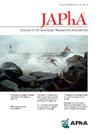处方药监测计划对受控物质处方查询的影响:来自德克萨斯州的调查结果。
IF 2.5
4区 医学
Q3 PHARMACOLOGY & PHARMACY
Journal of the American Pharmacists Association
Pub Date : 2025-04-15
DOI:10.1016/j.japh.2025.102402
引用次数: 0
摘要
背景:从2020年3月1日开始,德克萨斯州要求州许可的处方医生和药房在开出受控物质之前,在该州的处方药监测计划(PDMP)中查询患者的处方历史。目的:研究PDMP命令对德克萨斯州阿片类药物、苯二氮卓类药物、巴比妥类药物和卡异丙醇处方查询率的影响。方法:使用2019年9月1日- 2020年9月30日德克萨斯州PDMP的月度数据进行中断时间序列分析。在德克萨斯州PDMP命令实施前后六个月,分别分析了每种药物类别的查询处方趋势率的变化。分别对处方和药房相关的查询进行了分析。敏感度分析是通过评价兴奋剂类药物(不受任务期影响的一类药物)的具体措施,并将分析延长至任务期后12个月,以评估较长期趋势来进行的。结果:强制要求与处方者对所有药物类别的处方查询率立即下降(范围:-10.7%至-4.8%)和药店对所有药物类别的查询率立即增加(除了巴比妥酸盐(0.2%-11.5%))有关。这导致巴比妥类药物的处方查询量总体上立即下降(-8.3%)。与基线(授权前)相比,所有药物类别的总体每月处方查询的变化在主分析和敏感性分析中都显示出微不足道的下降。结论:德克萨斯州PDMP的直接影响可能有限,特别是考虑到该任务的实施恰逢COVID-19大流行。为了更有效地解决受管制药物滥用问题,国家应考虑加强这项任务,并探索进一步的措施来加强其影响。本文章由计算机程序翻译,如有差异,请以英文原文为准。
Effects of the prescription drug monitoring program mandate on queries of controlled substance prescriptions: Findings from Texas
Background
The state of Texas required state-licensed prescribers and pharmacies to query their patients' prescription histories in the state's prescription drug monitoring program (PDMP) before prescribing controlled substances, starting on March 1, 2020.
Objectives
To examine the effect of the PDMP mandate on the rate of queried prescriptions for opioids, benzodiazepines, barbiturates, and carisoprodol in Texas.
Methods
Interrupted time-series analyses were conducted using monthly data from the Texas Prescription Monitoring Program (TPMP), covering September 1, 2019 till September 30, 2020. Changes in the rates of queried prescription trends 6 months before and after the implementation of the TPMP mandate were analyzed separately for each drug class. Separate analyses were conducted for prescriber- and pharmacy-related queries. Sensitivity analyses were performed by evaluating measures specific to the stimulant drug class (a drug class unaffected by the mandate) and extending the analysis to a 12-month postmandate period to assess longer term trends.
Results
The mandate was associated with an immediate decline in the rate of prescription queries by prescribers across all drug classes (range: −10.7% to −4.8%) and an immediate increase in queries by pharmacies for all drug classes, except for barbiturates (0.2% to 11.5%). This resulted in an overall immediate decrease in prescription queries for barbiturates (−8.3%). Compared to the baseline (premandate), the change in overall monthly prescription queries across all drug classes showed an insignificant decline in both the main and sensitivity analyses.
Conclusion
The immediate impact of the TPMP may be limited, particularly given that the mandate's implementation coincided with the COVID-19 pandemic. To more effectively address controlled substance misuse, the state should consider strengthening the mandate and exploring additional measures to enhance its impact.
求助全文
通过发布文献求助,成功后即可免费获取论文全文。
去求助
来源期刊
CiteScore
3.30
自引率
14.30%
发文量
336
审稿时长
46 days
期刊介绍:
The Journal of the American Pharmacists Association is the official peer-reviewed journal of the American Pharmacists Association (APhA), providing information on pharmaceutical care, drug therapy, diseases and other health issues, trends in pharmacy practice and therapeutics, informed opinion, and original research. JAPhA publishes original research, reviews, experiences, and opinion articles that link science to contemporary pharmacy practice to improve patient care.

 求助内容:
求助内容: 应助结果提醒方式:
应助结果提醒方式:


